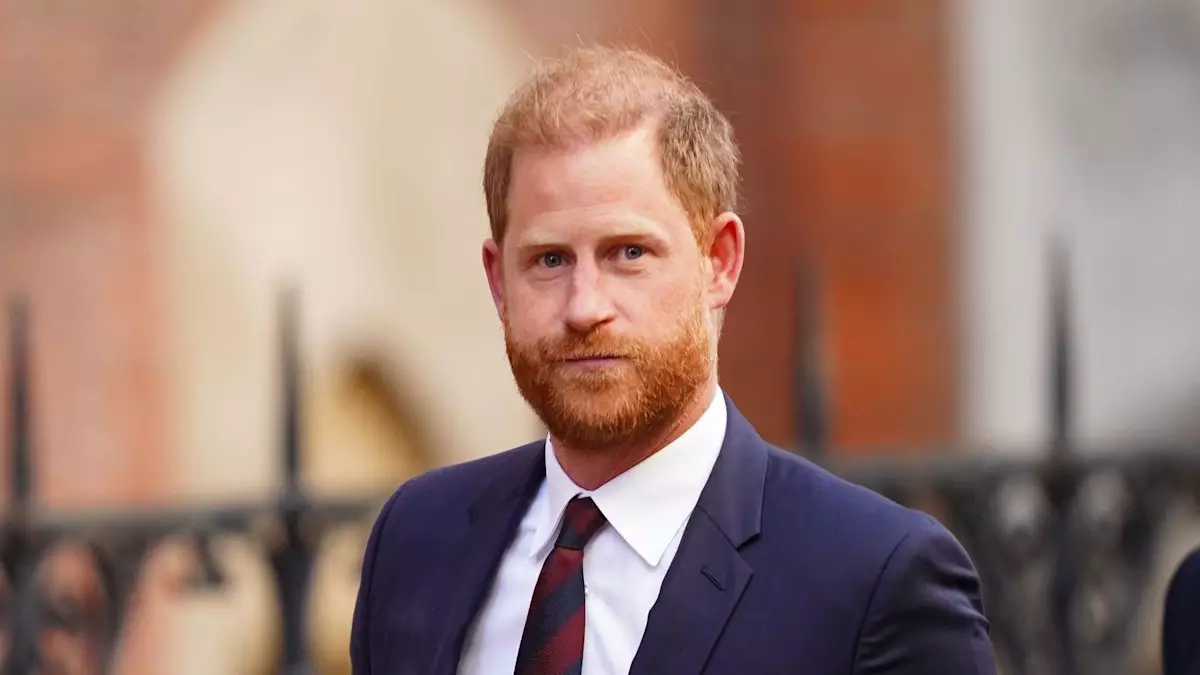In recent developments surrounding the Duke of Sussex, Prince Harry has expressed profound anxiety regarding the withdrawal of his police protection—a concern that resonates deeply amid heightened discussions about celebrity privacy and safety. At 40 years old, Harry finds himself entwined in a legal battle against the Home Office, revealing his apprehensions, which have only intensified through a process he described as “exhausting” and “overwhelming.” The crux of the matter stems from a ruling advocating for a lesser degree of protection, thereby igniting debates on what security entails for those who once stood in the public eye as royals.
Harry’s legal challenge stems primarily from the 2020 determination made by the Executive Committee for the Protection of Royalty and Public Figures (Ravec). This committee has deemed that after stepping back from royal duties, Harry and his wife, Meghan Markle, would no longer receive the traditional level of state protection. As Harry recounts, “people would be shocked by what’s being held back,” suggesting that elements beyond the veil of public knowledge could have profound implications not just for him but for broader discussions surrounding security protocols for public figures.
The Specifics of the Ongoing Legal Battle
The legal proceedings, which unfolded over two intensive days in the Royal Courts of Justice, were marked by varying dynamics, including private hearings that housed confidential evidence. Such elements raise questions about transparency and accountability in governmental decisions regarding security. Harry’s claim appears to challenge not only the specifics of his own safety but also advocates for a wider examination of the support systems available to former royals who wish to live more independently.
The Home Office’s firm rebuttal of Harry’s claims highlights a significant division: they argue that decisions regarding protection must remain case-by-case, swayed by evolving threats and current circumstances. What complicates matters further is the suggestion that beyond mere logistics, the shift in security corresponds to a narrative aimed at undermining Harry and Meghan’s choices to distance themselves from traditional royal responsibilities, a claim staunchly denied by Buckingham Palace representatives.
The Human Element: More Than Just Legalities
A poignant aspect of the hearings was articulated by Shaheed Fatima KC, counsel for Harry, who underscored the “human dimension” of the case. Fatima’s assertion drives home the reality that while legal battles might focus on the logistics of protection, at the core lies an individual navigating a tumultuous landscape filled with risks and uncertainties. Harry himself is not merely a figure of fascination—he embodies the complexities of modern royalty intertwined with familial and personal strife.
Critically, this case urges society to reassess the mechanisms by which we ensure the safety of public figures, especially those who opt to step aside from traditional roles. By pulling back the curtain on the systemic challenges faced, it confronts audiences with a deeper understanding of how such decisions could impact the lives of those acquainted with both privilege and peril.
Public Response: The Power of Perception
The public discourse surrounding Harry’s situation demonstrates the realm of perception, particularly in how individuals interpret the responsibilities of both the monarchy and its members. With social media amplifying every statement, from Harry’s pointed remarks to the Home Office’s defenses, the discourse has taken on a life of its own. Public sympathy often swings based on reported details, showcasing a fractured society entrenched in differing views on royal relevance and the deservingness of security.
This case could potentially set a significant precedent regarding how former royals and high-profile individuals are treated concerning their safety. As it evolves, the implications stretch beyond Harry and Meghan, potentially affecting others in similar circumstances. Should the courts acknowledge the unique needs of those once tethered to the royal institution, a reformation in security protocol might transpire, heralding a new chapter in the intersection of celebrity status and personal safety.
Ultimately, as Prince Harry continues to navigate this multifaceted legal challenge, the ongoing saga encapsulates a profound examination of modern royalty’s role in a world increasingly defined by scrutiny, personal choice, and the necessity of safety in public life.

